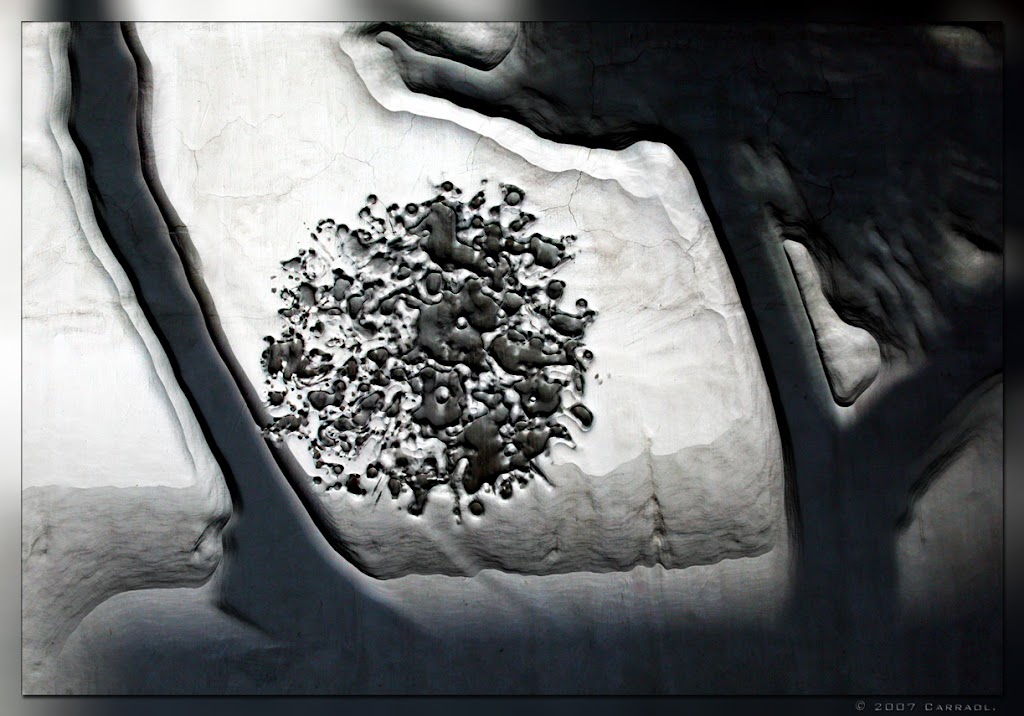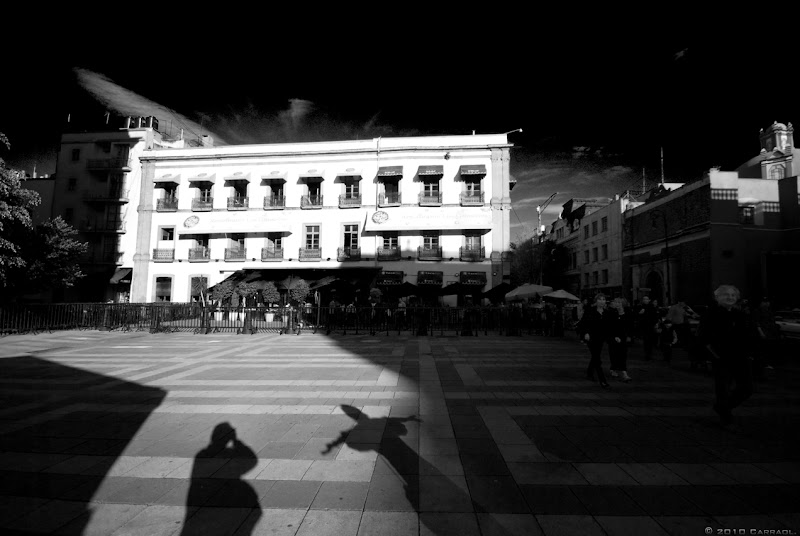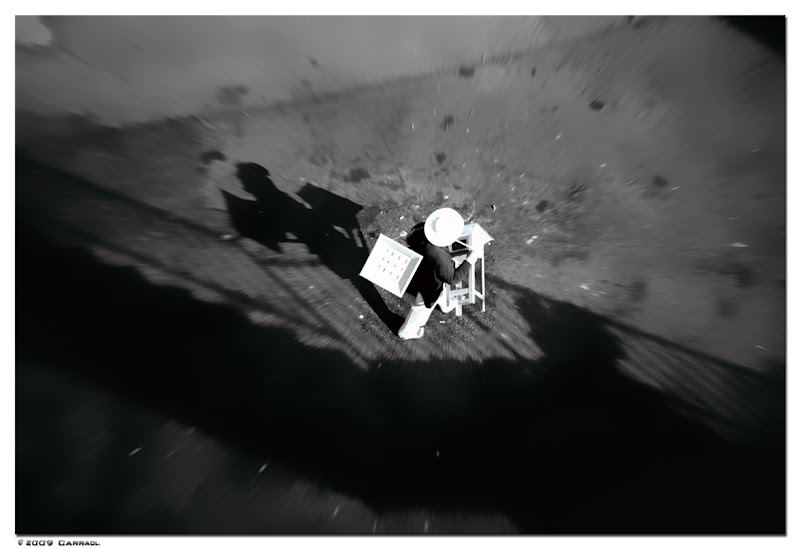
Gracias por su visita / Thanks for visiting.
Karlheinz StockhausenSad NewsDec 13th 2007
From The Economist print edition.
Karlheinz Stockhausen, seeker of new sounds, died on December 5th, aged 79.

Lebrecht Collection
Other children had teddy bears and dolls; but Karlheinz Stockhausen had a little wooden hammer. As he toddled round the run-down family farm in the hills near Cologne, he would hit things with it to see what sound they made. Each note, he established young, sent him a different message. No plink or plunk was quite the same as any other.
Most folk at his premières in the 1950s and 1960s might have wished he had never discovered that. Each Stockhausen piece was a shock to the system. It was not just that he had decided tonality was dead; Schoenberg's 12-note serialism had already made dissonance routine. It was not just that he thought “intensive measuring and counting” the key to music's future; Stravinsky had got there long before him. It was that Stockhausen kept on looking for, and finding, sounds never heard before. He made a formula out of the individuality of notes—their particular pitch, timbre and duration, and whether they were soft as a leaf or knocked your hat off—and revelled in it in the most alarming way.
“Mikrophonie I” (1964), for example, was inspired by hitting the tam-tam that hung in his garden with spoons, tumblers and an egg-timer. “Kurzwellen” (1968) was based on the “foreign sounds” of short-wave radio. His most famous piece, and possibly his most popular—though he was never popular—was “Stimmung”, or “Tuning” (1968), a sextet for unaccompanied voices on a six-note chord of B-flat that sounded sometimes like a digeridoo and sometimes like blowing across the top of the bottle, and in which the most beautiful harmonics would be interrupted by this:
Pee peri pee pee: right over my tree
Let it gently run down
God is that warm
Small wonder that Sir Thomas Beecham, asked if he had conducted any Stockhausen, said no, but he thought he might once have trodden in some.
Stockhausen's great passion was electronic music, which in the 1950s seemed suddenly to give a pure, bright sound, like “raindrops in the sun”, to all the processes of the universe. He was studying then in Paris with Messiaen and Milhaud, but preferred to hole up in studios playing with tapes and sine waves. The result of his labours might be mere background noise, but he liked even that, especially if it could be run through big loudspeakers to a baffled audience. He was delighted to find that metallic sounds could become human voices, and that human voices could be made to quack like a duck. He could conceive and make the cosmos over again.
Electronics also made him funky. In the late 1960s he found jazzmen and rock bands—Miles Davis, Frank Zappa, the Grateful Dead—quoting him and even sitting at his feet when he lectured at the University of California. He appeared on the cover of the Beatles' “Sergeant Pepper”. And there was probably no one else who could make electronic sounds so lusciously melodic (as in “Kontakte”, of 1959-60), by sheer contrast with all the rattling and plicking that had gone on before.
String quartet for helicopters
Stockhausen's music was constructed on mathematical principles; but, as the years passed, he liked to throw in more elements of motion, freedom and chance. You could play his “Zyklus”, for percussion, upside down or back to front or in any order you liked. In “Gruppen” (1955-57) he used three orchestras, playing different notes at different tempi from different directions. But even this was not enough for the man who often dreamed he was a bird flying; and in his last, huge opera project, “Licht” (Light), he included a string quartet in which the players were in four separate helicopters whirling above the concert hall.
Was this music at all? He thought it was. He whistled his own melodies, he said, as readily as he had once whistled Mozart's. And he was looking for “a new beauty” all the time. There was a deep, obsessive seriousness in him, underlined by a disarming stare, which, he hoped, would “yet reduce even the howling wolves to silence”.
Sheer ego-tripping, countered his detractors. “Licht”, which proposed an opera for every day of the week, needed five orchestras, nine choirs and seven concert halls. Other pieces required purple lighting or Star Trek costumes. And he was ruthlessly protective of the brand, using his own paramours and children to play his compositions, acting as his own soundman and marketing his recordings only through Stockhausen Verlag, at sky-high prices. But he had reason, in his view, to be weird and exclusive. He was special.
Just how special was not readily apparent to those who saw him, in his old Beethoven frock-coat or his shapeless orange cardigan. After the 1970s, Stockhausen seemed to disappear up his own cul-de-sac of experimental noise. But this was his mission. He often dreamt that he had been born and trained on Sirius, and was on Earth “to bring celestial music to humans, and human music to the celestial beings”. To ensure that contact, some of his pieces had to be performed under the stars. By making new sounds, he was preparing the way for a higher kind of life.
Yet again, the general public did not get the message. But when he died, his small band of devoted followers was blissfully sure that he had.
Copyright © 2007 The Economist Newspaper and The Economist Group. All rights reserved.






